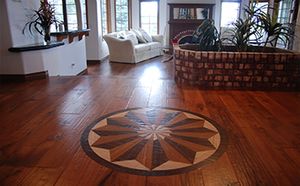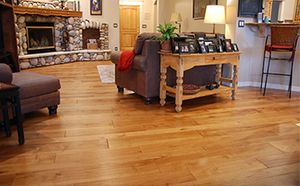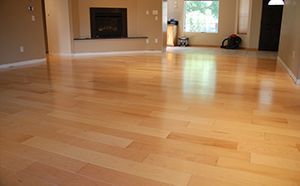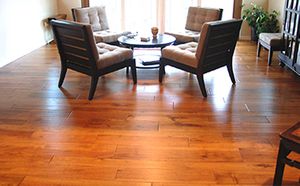PRESS AND ARTICLES ABOUT FLOORING IN PRESCOTT
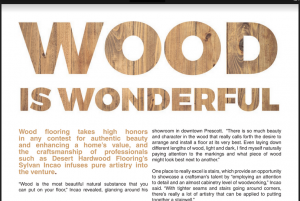
CLICK HERE TO READ: TOP RATED LOCAL FEATURE ARTICLE 2018
WOOD IS WONDERFUL
BUILDING YAVAPAI MAGAZINE 2018. pages 120-123
CLICK HERE to read this article in its original version
Wood flooring takes high honors in any contest for authentic beauty and enhancing a home’s value, and the craftsmanship of professionals such as Desert Hardwood Flooring’s Sylvan Incao infuses pure artistry into the venture.
“Wood is the most beautiful natural substance that you can put on your floor,” Incao revealed, glancing around his showroom in downtown Prescott. “There is so much beauty and character in the wood that really calls forth the desire to arrange and install a floor at its very best. Even laying down different lengths of wood, light and dark, I find myself naturally paying attention to the markings and what piece of wood might look best next to another.”
One place to really excel is stairs, which provide an opportunity to showcase a craftsman’s talent by “employing an attention to detail and an almost cabinetry level of woodworking,” Incao said. “With tighter seams and stairs going around corners, there’s really a lot of artistry that can be applied to putting together a stairwell.”
That sense of artistry and perfection push Incao to deliver best effort with every project: “I am a small businessman and lead installer for my business, so I am in a real niche of craftsmanship, quality, and attention to detail. The corner on the market I have is really unique. I consider myself more a craftsman. Even though I am not making the wood, there is a certain artistry and skill in installing it well.”
Each project begins with educating customers about the benefits of wood flooring, the different species of wood available, costs for product and labor, installation considerations, cleaning and maintaining the floor, and simply enjoying the resulting splendor.
“The first thing to think about is color because any wood can be stained any color,” Incao explained. “The reason we start with color is because there are so many choices; light, dark or something in the middle. If I know that the customer prefers something light, I can eliminate a whole host of woods. If they want medium brown, I know exactly what to pull out to start with.”
Further discussion uncovers more customer preferences and illustrates how household habits, interior design choices, favored wood species, differing plank widths, intensity of wood grain, and imperviousness impact flooring decisions.
The potentially overwhelming options available today in wood flooring prompt Incao to keep “hundreds rather than thousands” of samples. Using that more manageable selection, he poses pertinent questions to discover what most appeals to customers and then guides them to products that will best meet their needs.
“There are harder woods and less hard woods,” Incao said, and the ideal selection often involves geographic origin, anticipated wear and tear, and personal preference. Harder woods include oak and hickory, while “softer and more photo sensitive” species include Brazilian walnut, cherry, and mahogany.
“I love rainforest hardwoods, and they are not out of the question, but need to be carefully considered,” he advised. “Most manufacturers require humidity levels to be maintained, usually between 30 and 50 percent. That’s not possible here, unless there is an extensive full house humidifier integrated with the air conditioning system.”
Very few people have problems with hardwood, he explained, as long as the selected woods are compatible with the local climate into which they are installed. For this area, the timber species most often recommended are hickory, oak, maple, birch, and walnut. “A lot of woods on the market today are within those five,” he stated. “Most of it is American, Canadian or Euro harvested. These woods come from varying conditions, but not from a jungle. Climates where they are grown are temperate all year round and have regular seasons.” Thus, they are well-suited to the relatively mild four seasons of the northern Arizona high desert.
Bamboo “historically has a lousy track record here in Arizona,” so much so, he said, that he no longer installs it. Even if bamboo is suitably dried and allowed to properly acclimate to the home prior to installation, it still shrinks in arid surroundings.
Family size impacts consideration of hardwood flooring. Empty nesters, seniors, and retirees often have different goals and preferences than young families raising children. Retirees often “keep a very elegant house, clean and well tended,” he said. “You’ll hardly ever see a single mark on their floors.”
However, families with younger children usually cannot avoid dents, scratches and the other wear and tear of everyday living. Considerations should include the risks of grit ground into floors, liquid spills, and scraping toys. For younger
families, Incao recommends harder and more durable species rather than softer varieties. Most wood installed in this area is rustic in appearance, he said, as opposed to more formal and smoother woods with no knots. Rustic woods handsomely accent the homes in Northern Arizona, while also serving to mask marring by children or animals.
“Wood floors are fine for pets, with the exception of large dogs,” Incao explained. “And they can still be fine for large dogs, but the floor can scratch, depending on the wood. Whenever a client has an 80-pound lab or golden retriever, I prepare them to get a very rustic wood with a lot of character, where a scratch here or there from a dog will not stick out so much.”
Some customers just decide to go with a laminate, he noted: “It’s artificial, but also is not so scratch-able. I serve the laminate market because there’s a need for its affordability and durability. It’s more durable than wood because it’s an artificial surface. It does not add value to a home the way a hardwood floor does, but manufacturers are getting better and better at imitating wood. A lot of people do their whole house in it. Even big dogs cannot scratch good laminate.” Pricing for wood floors varies and each job is different. The price includes tear out of old flooring, baseboard removal and replacement, disposing of old materials, undercutting fireplaces, sanding, filling holes, and other preparation.
The majority of installations in Arizona over at least the past 20 years have been prefinished engineered hardwoods versus solids. The distinction between the two is important, he advised, with the typical solid about 3/4 of an inch thick in planks three or four inches wide and generally refinished on site for “a classic old-school or traditional look.”
The advantage of prefinished engineered woods is a broader choice of planks with a better, longer lasting and more durable finish that does not require home evacuation during the dusty onsite finishing. The issue with solids, especially in Arizona, is that they respond more to humidity, temperature, and weather changes. Seasonal changes cause them to expand and contract.
“Engineered wood planks are constructed with different wood species layered together and running in different directions beneath the more expensive top layer,” Incao continued. “The purpose of combining different species in this construction method is that they tend to hold each other in place. The result is a much more stable wood plank that moves imperceptibly or not at all during seasonal changes.”
Additionally, solid woods must be nailed down to a wood subfloor, while engineered woods can be glued to or float on concrete. Since the majority of Arizona homes are build on slabs, engineered hardwoods are the only otion. Another benefit of prefinished engineered hardwoods entails 25 year (and greater) warranties arising from the application of layer after layer of urethane using crystalline aluminum oxide and other minerals.
“You cannot get traditional polyurethane applied on site to ever dry that hard,” he said. “It’s a great innovation over the last 20 years at least. And they just get better and better at it.”
QUESTIONS ASKED BY CUSTOMERS ABOUT INSTALLING WOOD FLOORING GENERALLY FALL INTO TWO CATEGORIES: INSTALLATION AND MAINTENANCE.
Room to Room
No one needs to move out during an installation of prefinished engineered hardwood, even when it involves the whole house. Installation is managed room by room, with furnishings moved to one half of the room while the other side is worked on. The installers move all furniture.
Noise and Dust
Nail guns, hammers and other tools create noise. All wood is cut outside and all installers do their best to keep dust out, but there will be some, for example, just in the act of pulling up old carpet. There’s just no way to avoid some dust when you have tear out and new installation.
Routine Cleaning
Repeated applications of water will deteriorate wood, so the traditional mop and bucket of water should be avoided. All that’s needed is a mostly dry or slightly damp Swiffer or disposable pad. No wax, Murphy oil, or other product is needed because the flooring is so sturdy. Hardwood floor cleaners can be purchased, but they are “really just glorified Windex.” A little vinegar in the water is fine once in a while.
Spills and Cleanup
Hardwood floors are spill-resistant, but not waterproof. Spills and pet accidents should be cleaned up quickly with a sponge or cloth.

